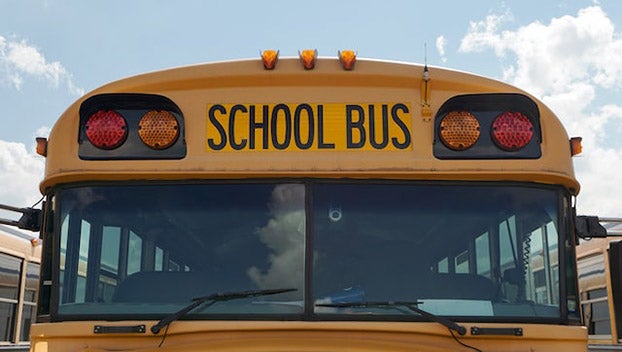An incentive to attend: Neighboring schools cut down on absences
Published 12:07 am Saturday, October 28, 2023
|
Getting your Trinity Audio player ready...
|
It’s a problem facing schools across the state. Students just aren’t showing up for classes. Now in some areas, like Prince Edward County, it’s more of a problem, with more than 30% of students chronically absent. But neighboring Charlotte County is a rarity. Unlike every district around it, not only are the numbers dropping, in some of the schools it’s falling below pre-pandemic levels. How? District officials credit a new program.
“Each of our schools is provided a small attendance incentive budget by the division annually, to offer students positive incentives to limit their absences each quarter,” said Charlotte County superintendent Robbie Mason. “We are working hard in our division to promote and incentivize student attendance.”
The evidence in Charlotte schools
And the evidence in Charlotte schools proves that this works. We’ll start with Bacon District Elementary, the school that’s seen the biggest impact. In the 2021-22 school year, 23% of Bacon District’s students were chronically absent. This past year, that number dropped to 16%. To put that in perspective, let’s look at two elementary schools in neighboring districts. Prince Edward Elementary last year had a 29% chronic absenteeism rate. Victoria Elementary in Lunenburg County, meanwhile, had a 35% chronic absenteeism rate in the same period. And yet Bacon District stands at 16% and falling. How is that possible? Bacon District Principal Anne Snead says it’s about positive reinforcement.
“(We) recognize students for the first progress report who have missed three days or less,” Snead said. “(They get) to eat (a picnic) lunch in the atrium with their fellow classmates. They will have access during this time to sidewalk chalk, basketballs and such.”
And the rewards increase for each period. For the second progress report, for example, students with three or fewer absences can play games and earn prizes. For the third report, they get to have a popcorn party. And for the fourth report, they get to watch a movie. They also have year-long goals to aim for. This year, Snead plans to get a bounce house and hold a carnival day at the end of the year for those with three or fewer total absences.
It’s also worth noting that the student scores are improving as well. Bacon District went from 84% passing English before the pandemic to 88% this past year. Pre-pandemic, the school reported 89% passing the math test, now that’s up to 93%. Science scores have also jumped from 78% to 82% passing.
Rates drop at Central Middle
The same can be said just down the road at Central Middle School. The school, which previously had a 26.4% chronic absence rate, is down to 25.9% and dropping. Not as big a drop as Bacon, but across Southside and Virginia as a whole, it’s a rarity right now to see drops of any kind. Those rates we mentioned from Prince Edward and Victoria had been increasing year over year. And if you want to compare one middle school with another, there’s Prince Edward Middle, which remained constant at a 30% chronic absenteeism rate year over year.
At Central Middle, the goals are a bit tougher. In order to get a reward, students can have no more than two excused absences for the 9-week period. And in return, those students get things like free sports passes to home games, a free slushie from the slushie truck at the year-end kickball game or entrance to a BINGO game where they can win prizes. And if you achieve perfect attendance for the entire year, there’s a free ticket to Kings Dominion waiting for you over summer break.
“Being present has a significant impact on a student’s overall success,” said Central Middle Principal Jessica Pillow.
She points to passing rates improving across the board. In English, 76% of Central students passed in 2019, before the pandemic. Now that number’s up to 80%. The school is also outpacing its 2019 pass rate in science, from 78% to 79%.
Firebirds take flight
At Phenix Elementary, the program comes in the form of free playtime and games. Principal Daniel Richardson detailed that for those who made it through each nine weeks with perfect attendance, they get certain rewards. For the first quarter, that was 30 minutes of additional playtime and popcorn.
For the second quarter, in January, that’ll include special snacks and a board game party in the cafeteria. If they have perfect attendance in the third quarter of the year, it’ll be 30 minutes of playtime and popcorn again. And then if they’re present for all of the fourth quarter, then on May 10, the students get a dance and snow cone party.
“The Phenix Elementary School attendance incentive program is designed to encourage regular and punctual attendance among students,” Richardson said. “This program offers rewards and recognition to students who maintain high attendance rates throughout the school year. All students receive a necklace with an initial “brag tag.” Each child that misses less than the prescribed number of days per quarter receives an additional charm for the attendance necklace. By implementing this program, Phenix Elementary School aims to instill the importance of consistency in attending classes, as regular attendance is directly linked to academic success.
How does it work in high school?
And then there comes the big question. How do you motivate high school students to avoid absences? You can argue, but it’s working. In 2021-22, the chronic absenteeism rate at Randolph-Henry High was 29.5%. Now it’s at 26.6% and dropping.
In high school, Randolph-Henry Principal Erin Davis points out, it’s a bit different. It’s not just about incentives. Sometimes, you just need to make sure students have what they need on campus.
“We offer a free breakfast and lunch to all students, stock a student supply cart in the halls, maintain a Statesmen Care program for hygiene items in the restrooms, and keep a student success clothes closet on site for students who need clothes,” Davis said. “(Also), seniors who need to work during the school day may qualify for a work release program or a student internship.”
But that doesn’t mean there aren’t incentives as well, for those with perfect or good attendance. If a student has two or fewer absences during a grading period, there are different benefits. In October, for example, students who qualify will be invited to an outdoor movie night on the front lawn of the school, with free pizza and popcorn. In December, they’ll be able to play games in the gym after class, with a catered BBQ meal. Then in April, miss two or fewer classes and you get to go free to a Durham Bulls baseball game. And finally in May, the school will host an outdoor cookout on the front lawn with inflatables, games and other activities.
“We believe that these positive incentives make a great impact on encouraging students to attend school regularly,” Davis said. “As we continue to work towards a lower percentage of students who are considered chronically absent, we call on everyone to help us in our efforts to remind students of the importance of being at school each day.”
Beyond Charlotte schools
Beyond Charlotte schools, the state is also getting involved to find a way to keep kids in class. That takes the form of the Chronic Absenteeism Task Force. The group meets every two weeks to look at everything that is playing a role in absent students. That includes food scarcity, health and safety, along with the aforementioned transportation.
The task force will then come up with ways those issues can be helped. Maybe that’s through a state grant. Maybe it’s through moving resources and manpower from one department to another. And if there are any regulatory hurdles, if government red tape is somehow stopping best practices from being used, the task force will flag that too.
Also, to be clear, this isn’t a group of state bureaucrats. The group includes five school district superintendents, including Chip Jones. There’s also two school principals, one school board member, a parent representative, a YMCA director and a medical doctor. Anything the group comes up with, in addition to going out to school boards, will also be posted on the Virginia Department of Education website, so people can see what’s happening.





